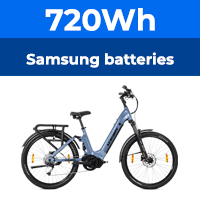Hi Mark,
If you are going to remove the rotor from the stator, to expose the Hall devices for removal, you will need to apply a steady pressure to hub shaft to over come the force exerted by the magnets.
While supporting the outer edge of the rotor much like when you removed the cover plate, tapping it with a mallet will not work as the magnets will try to pull it back on.
I went down to my local Kwik-Fit type garage, they usually have an hydraulic press they use for removing wheel bearings - if you are lucky, like I was, the mechanic was fascinated when I showed him the motor and was only to pleased to help out.
If you are going to remove the rotor from the stator, to expose the Hall devices for removal, you will need to apply a steady pressure to hub shaft to over come the force exerted by the magnets.
While supporting the outer edge of the rotor much like when you removed the cover plate, tapping it with a mallet will not work as the magnets will try to pull it back on.
I went down to my local Kwik-Fit type garage, they usually have an hydraulic press they use for removing wheel bearings - if you are lucky, like I was, the mechanic was fascinated when I showed him the motor and was only to pleased to help out.
Last edited:







